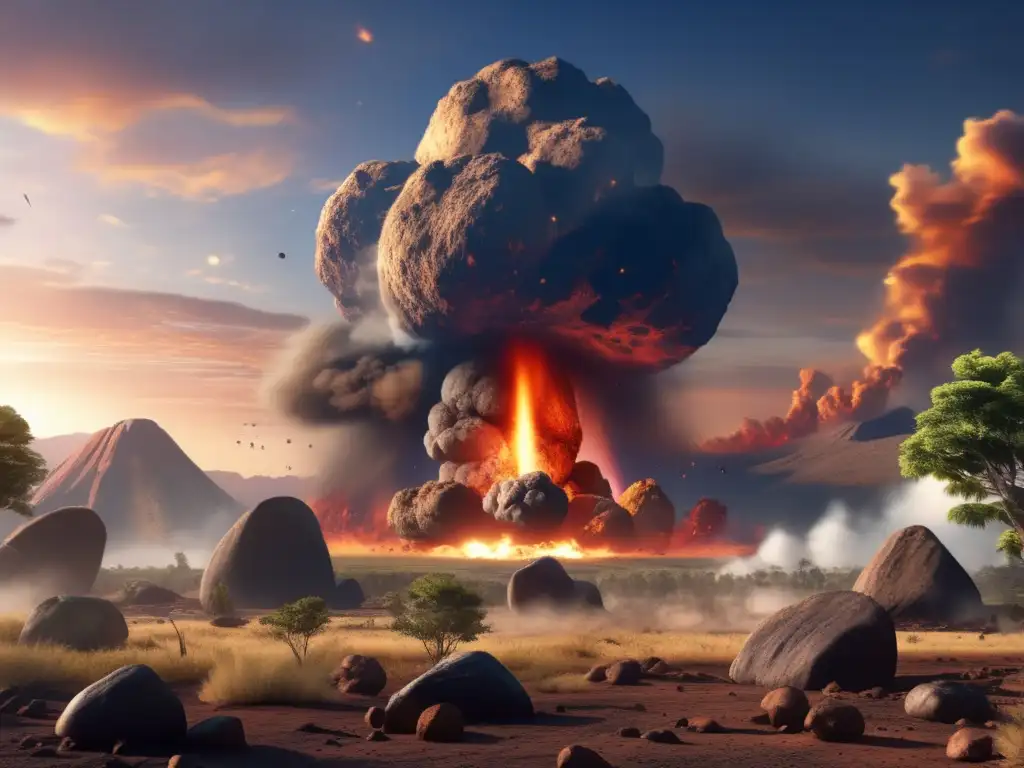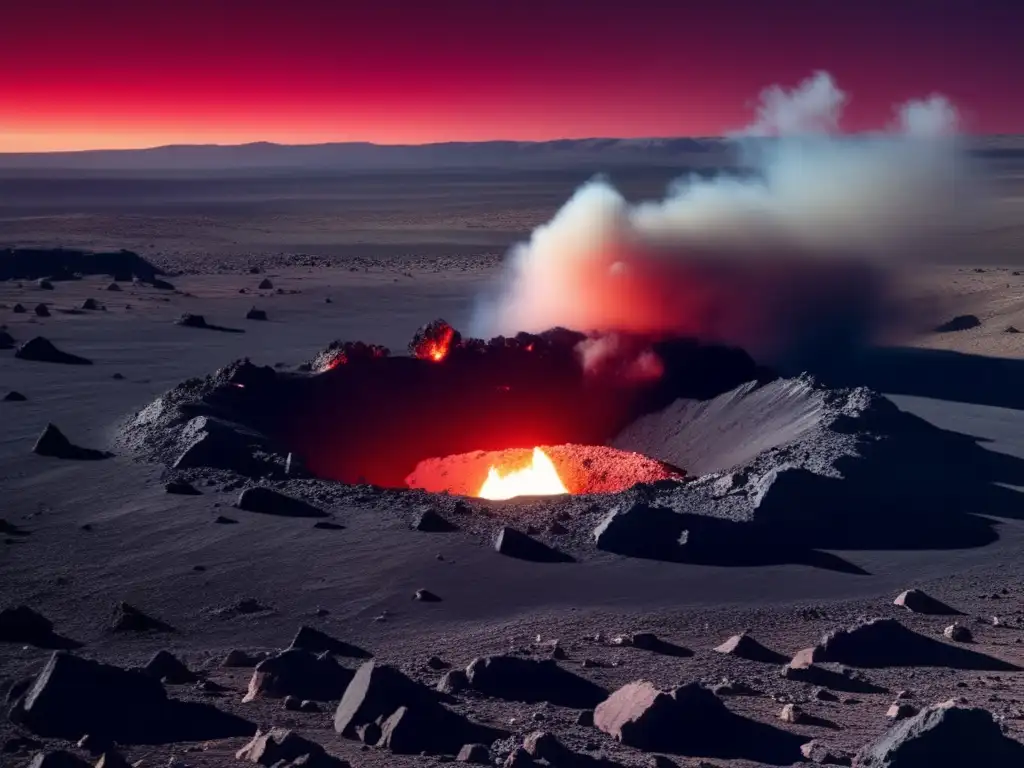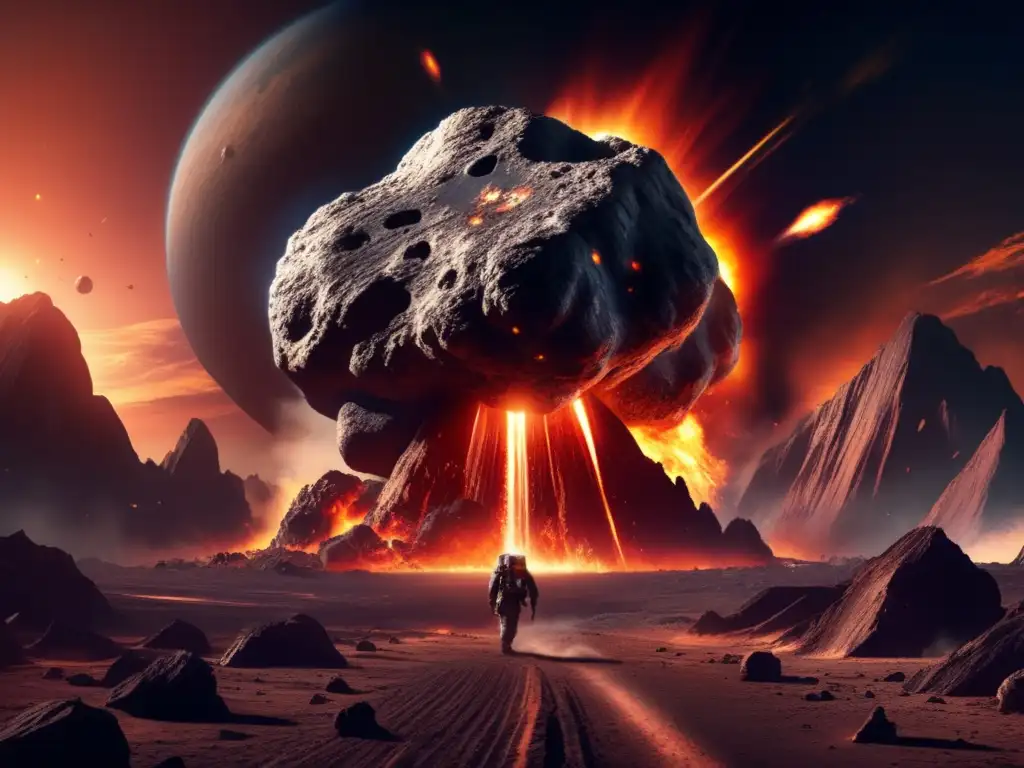Dinosaur Extinction: The Asteroid Theory Revisited

Introduction
The extinction of the dinosaurs has captivated the imaginations of people for centuries. While some theories suggest that volcanic activity or climate change caused the disappearance of these giant creatures, most scientists agree that an asteroid impact was the cause of the extinction event. In this article, we will revisit the asteroid theory and the evidence supporting it, as well as discuss the implications of this event and future asteroid impacts.
Proof of Asteroid Impact

Dating of the Impact
Scientists have dated the Chicxulub impact structure in Mexico to approximately 66 million years ago, which coincides with the time period of the Cretaceous-Paleogene extinction event when the dinosaurs disappeared. The impact is estimated to have occurred at a velocity of 40,000 mph, releasing energy equivalent to millions of atomic bombs.
Absence of Life
Fossil records show that many species of animals and plants suddenly went extinct at the end of the Cretaceous period. The absence of life at the K-T boundary layer supports the theory that the asteroid impact caused a catastrophic event that wiped out much of the earth's living organisms.
Disrupted Ecosystems
The asteroid impact caused a chain reaction that disrupted ecosystems worldwide. The impact created a giant crater and sparked fires that incinerated much of the planet's vegetation. The shockwave shattered rock formations and triggered tsunamis that devastated coastlines. These disruptions caused mass extinctions that completely altered the food web of the planet.
Consequences of Asteroid Impacts

Climate Change
Asteroid impacts can cause significant climate change by releasing dust and debris into the atmosphere, blocking out sunlight and causing global cooling. The impact can also release carbon dioxide and other greenhouse gases from the earth's crust, intensifying the greenhouse effect and leading to global warming.
Impact on Humans and Civilization
The extinction of the dinosaurs highlights the potential impact of asteroids on human life and civilization. While it is unlikely that an asteroid would directly impact a populated area, the destruction of ecosystems and the disruption of the global climate would have far-reaching consequences, including food shortages, social unrest, and economic collapse.
Mitigating Asteroid Impacts
Scientists are working on ways to detect and mitigate the risk of asteroid impacts. Strategies include tracking and deflecting asteroids, developing early warning systems, and improving emergency response plans. These efforts are critical to protecting human life and civilization from potential asteroid impacts.
Future Impacts and Planetary Defense

Asteroid Bennu
Asteroid Bennu is a potentially hazardous asteroid that is currently being studied by NASA. Bennu is estimated to be around 500 meters in diameter and has a chance of colliding with Earth in the next century. NASA is planning a mission to Bennu to study the asteroid's interaction with the Earth and develop strategies for deflecting similar asteroids in the future.
Planetary Defense Coordination Office
In 2016, NASA established the Planetary Defense Coordination Office to coordinate and manage efforts to detect, track, and mitigate the risk of asteroid impacts. The office works closely with other international organizations to improve asteroid detection and response strategies.
Emerging Technologies
New technologies, such as the Laser Bees concept, may offer promising solutions for deflecting threatening asteroids. Laser Bees would involve an array of spacecraft equipped with lasers that could vaporize parts of an approaching asteroid, changing its trajectory and preventing a collision with Earth.
Frequently Asked Questions

-
What caused the extinction of the dinosaurs?
The most widely accepted theory is that an asteroid impact caused the extinction of the dinosaurs.
-
What is the Planetary Defense Coordination Office?
The Planetary Defense Coordination Office is a branch of NASA that coordinates efforts to detect and mitigate the risk of asteroid impacts.
-
How do scientists plan to mitigate the risk of asteroid impacts?
Strategies include tracking and deflecting asteroids, developing early warning systems, and improving emergency response plans.
-
What is the Laser Bees concept?
Laser Bees would involve an array of spacecraft equipped with lasers that could vaporize parts of an approaching asteroid, changing its trajectory and preventing a collision with Earth.
-
What is the potential impact of asteroid impacts on human civilization?
Asteroid impacts could cause significant disruptions to the global climate and ecosystem, leading to food shortages, social unrest, and economic collapse.
Conclusion
The Chicxulub impact event remains one of the most catastrophic events in the history of our planet. While the extinction of the dinosaurs is a vivid example of the potential damage of asteroid impacts, it also serves as a reminder of the critical need for planetary defense and mitigation strategies. As technology and knowledge continue to advance, we can hope to better protect ourselves and our planet from future asteroid impacts.
Don't forget to join the conversation and share your thoughts in the comments section. Together, we can work towards a safer and more resilient world.
Additional Resources

NASA Planetary Defense Office Overview
NASA OSIRIS-REx Mission to Asteroid Bennu
The Planetary Society's Laser Bees Concept for Asteroid Deflection
 The Deadly Skies: Asteroids And The End Of Dinosaurs
The Deadly Skies: Asteroids And The End Of Dinosaurs When Hell Rained Down: The Asteroid Impact Theory
When Hell Rained Down: The Asteroid Impact Theory A Shattered Planet: The Asteroid-Dinosaur Extinction Connection
A Shattered Planet: The Asteroid-Dinosaur Extinction ConnectionIf you want to discover more articles similar to Dinosaur Extinction: The Asteroid Theory Revisited, you can visit the Asteroids and Dinosaurs category.
Leave a Reply

Articulos relacionados: